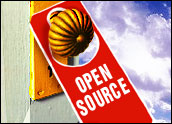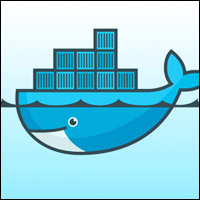We’re hearing more from vendors about how new features, functionality, rewrites, and releases are being driven by customers — by their direct experience using the software and competing in their various industries.
We’re also hearing from customers and users, including the enterprise market, that they are increasingly involved and thus empowered in open-source software communities. These communities involve collaborating on code and road maps and collectively requiring flexibility and openness, including that code and improvements be contributed upstream.
These perspectives on the sell side and now the buy side seem to indicate we have arrived at Open Source 2.0.
This newer open-source software trend is a natural progression and evolution of the movement away from developer-centric communities toward communities that have a higher regard for and respect for the user—particularly in the enterprise, where getting more participants to a project can translate to dollars.
Open Source 2.0 is characterized by a higher level of involvement and participation by users and customers, given the wide range of commercial vendors providing support. Today’s successful open source communities are also characterized by a higher level of collaboration among users and customers, whereby they pool resources and team up for a number of reasons: to avoid vendor lock-in, to negotiate better terms or prices, or to require that contributions be routed upstream.
In turn, these users and customers are empowered to further drive and steer open-source projects and communities, share their knowledge and experience with others, and expand open-source ecosystems.
Signs of Maturation
There has been an evolution of user and customer thinking and behavior with respect to open-source cloud software.
Previously, some large-scale users were directly involved in collaboration in terms of dealing with and resolving OpenStack issues, particularly for enterprises and at large scale, as noted in 451 Research’s report on OpenStack in 2013.
However, that customer community, like the OpenStack code, has also been evolving and maturing—to the point where OpenStack customers now band together on requirements for multiple vendors and service-level expectations, as 451 Research’s recent report found. This customer side of the community will continue to play an important role in OpenStack’s ongoing evolution.
Another area where open source software has evolved is DevOps, a reference to more agile, rapid, and efficient methodologies, technologies, and processes for managing IT infrastructure, application development, and deployments.
Although it is not necessarily a requirement to have clouds built on an open-source component, there is no denying the prevalence and significance of open-source staples such as Linux, MySQL, PostgreSQL, or Apache Web Server in cloud environments. Again, open-source software is not a requirement or a necessity, but it certainly helps smooth the transition to DevOps if people are familiar with open-source software tenets such as collaboration, communication, and transparency.
Greater Expectations
Mature, evolved open source software is also part of the polyglot programming trend, whereby today’s applications are based on a wider range of programming languages, frameworks, databases, and other components, and also are developed and deployed on a wider range of infrastructure that includes bare-metal servers, traditional data centers, virtual environments, public clouds, private clouds, and hybrid clouds.
As important as APIs are, open-source software is typically the most common denominator among the many, sometimes oddly named pieces of polyglot programming. Similar to its role in DevOps, open-source software can be a catalyst in responding to polyglot appropriately, with its usual benefits of availability and flexibility to fit with other technologies.
Open source software users and customers are also driving Open Source 2.0. Today’s users, whether enterprise employees, mobile device owners, or general consumers, have greater expectations of speed, quality, and uptime wherever they are and whatever device they are using.
Large enterprise users of open-source software also seem to be evolving in terms of their approaches to and uses of open-source software. While large enterprises and service providers frequently seek to use open-source software primarily for cost or flexibility reasons, they subsequently find other advantages that center on performance, innovation, or competitiveness in many cases.
With the force of both providers and consumers of open-source software driving higher levels of participation and collaboration, it seems only natural that both vendors and users/customers are getting better at aligning their needs and objectives. There will always be challenges and difficulties in contributing to and participating in open-source software projects and communities, but the advent of Open Source 2.0 shows it is worth the investment and resources required to make it work.



















































Open source is driven by a need for customization and finding ways to save money on licensing. But its like building your own car, you could build your own car with a open design, buy a engine you want and everything else. But you do end up doing a lot of the support yourself because nobody would want to work on such a car. But I can see why many want more then what they have in choices.
People want he ability to customize more. Just not convinced its right for everyone.